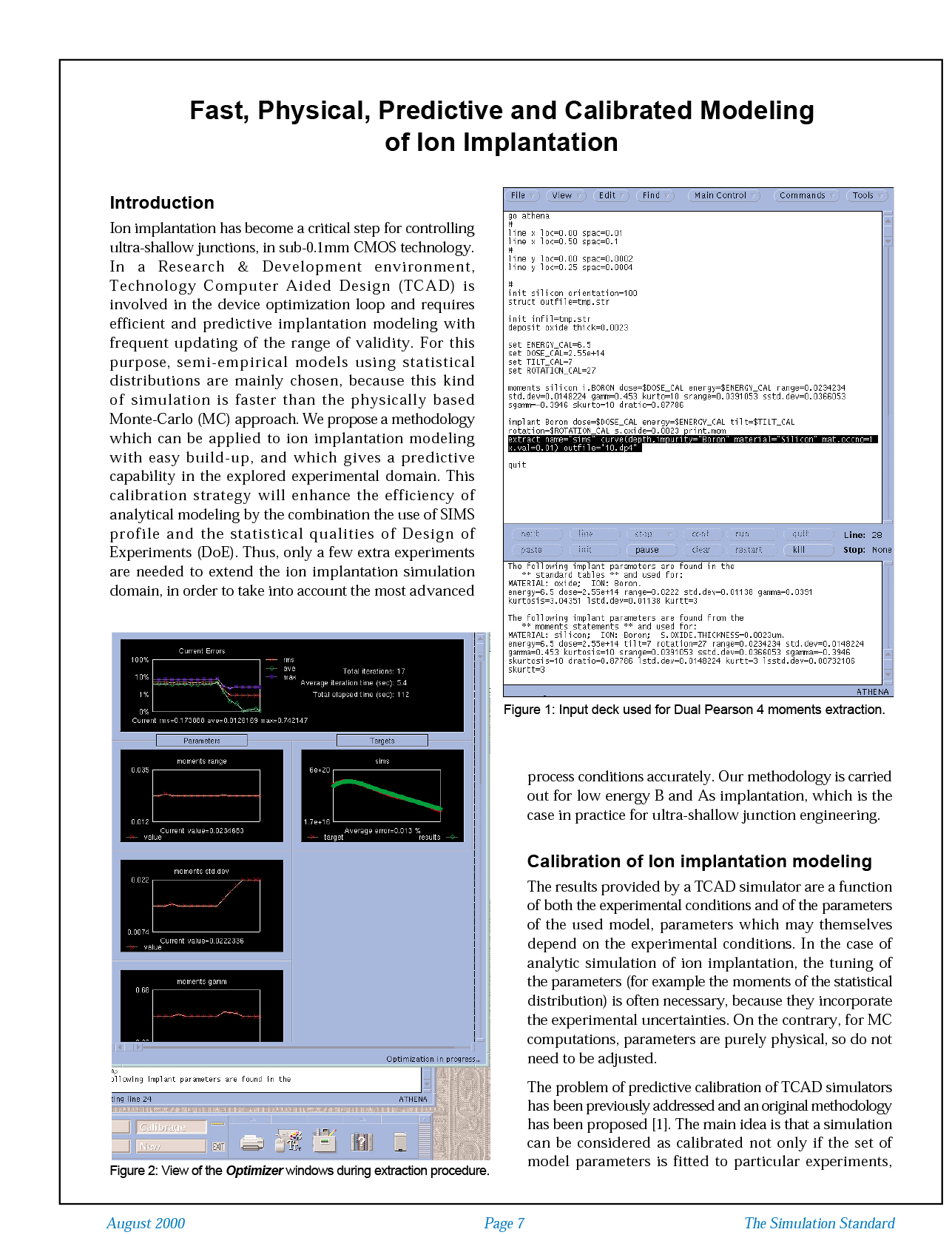Fast, Physical, Predictive and Calibrated Modeling of Ion Implantation
Introduction
Ion implantation has become a critical step for controlling ultra-shallow junctions, in sub-0.1mm CMOS technology. In a Research & Development environment, Technology Computer Aided Design (TCAD) is involved in the device optimization loop and requires efficient and predictive implantation modeling with frequent updating of the range of validity. For this purpose, semi-empirical models using statistical distributions are mainly chosen, because this kind of simulation is faster than the physically based Monte-Carlo (MC) approach. We propose a methodology which can be applied to ion implantation modeling with easy build-up, and which gives a predictive capability in the explored experimental domain. This calibration strategy will enhance the efficiency of analytical modeling by the combination the use of SIMS profile and the statistical qualities of Design of Experiments (DoE). Thus, only a few extra experiments are needed to extend the ion implantation simulation domain, in order to take into account the most advanced process conditions accurately. Our methodology is carried out for low energy B and As implantation, which is the case in practice for ultra-shallow junction engineering.



